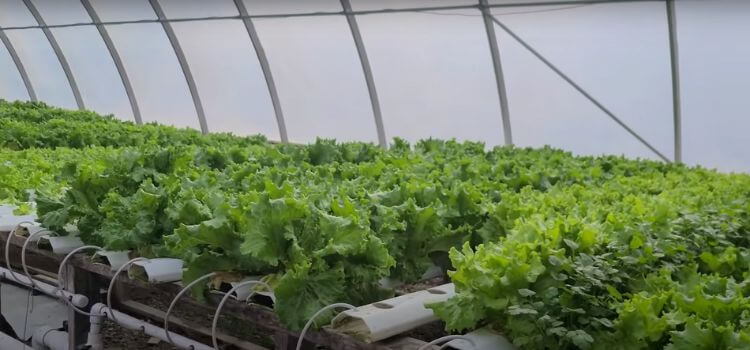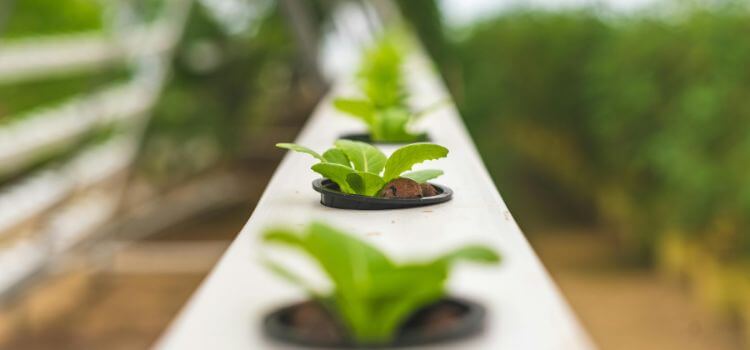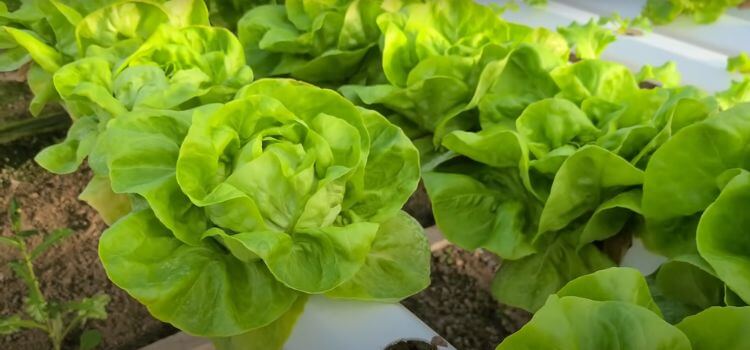As an Amazon Associate, I earn from qualifying purchases.
Add nutrients to hydroponic systems every 1 to 2 weeks. Adjust the frequency based on plant growth stages and nutrient levels.
Hydroponics offers an efficient way to grow plants without soil, using mineral nutrient solutions in a water solvent. This method allows for precise control over the nutrients your plants receive, leading to healthier growth and potentially higher yields.
The proper schedule involves monitoring plant health, growth rate, and the concentration of nutrients in the system. Striking the perfect balance is vital, as plants require different nutrient amounts at various stages of their lifecycle. Neglecting this balance can lead to nutrient deficiencies or toxicities, which can adversely affect plant development. Therefore, consistent maintenance and attention are paramount for a booming hydroponic garden.
Nutrients In Hydroponic Systems
In hydroponic gardening, the key to success lies in mastering the delicate balance of nutrients. Unlike traditional soil-based gardening, hydroponic systems necessitate a direct infusion of nutrients into water to foster plant growth. A thorough comprehension of the frequency and type of nutrients your plants require is paramount to their thriving in this soilless environment, preventing potential health issues.
Nutrients For Plant Growth
Plants need primary nutrients like Nitrogen (N), Phosphorus (P), and Potassium (K). These are the building blocks of a healthy hydroponic garden, each serving a critical role:
- Nitrogen promotes leaf growth.
- Phosphorus supports root and flower development.
- Potassium is vital for overall health.
Secondary nutrients such as Calcium (Ca), Magnesium (Mg), and Sulfur (S) are also essential but needed in smaller quantities.
The Role Of Macronutrients And Micronutrients
Hydroponic plants get their sustenance from two nutrient groups:
- Macronutrients: Includes N, P, and K, along with Ca, Mg, and S.
- Micronutrients: Tiny amounts of minerals like Boron (B), Manganese (Mn), and Iron (Fe)
Macronutrients fuel essential functions and growth, whereas micronutrients aid in disease resistance and enzyme production.
Regular water testing for nutrient levels is a non-negotiable aspect of hydroponic gardening. This practice allows for the necessary adjustments in formulas and feeding schedules, paving the way for significant hydroponic success and healthier plants.

Nutrient Schedule Tailored To Plant Needs
Nutrient management in hydroponics is like tailoring a suit – it must fit perfectly to get the best results. Plants have unique nutrient needs that change over their life cycle. A well-designed nutrient schedule can lead to lush growth and abundant harvests. Get the schedule right, and your plants will thrive.
Nutrient Requirements
Plants grow in stages, and each stage requires different nutrient mixes. Seedlings start with a delicate diet while flowering plants need meals to bloom. Think of a baby’s diet changing as it grows. You wouldn’t feed a newborn a steak, right? The same goes for your plants.
- Seedling Stage: High in phosphorus to promote root development
- Veg Stage: Nitrogen-rich for leafy growth
- Blooming Stage: Potassium and phosphorus for fruits and flowers
Set a calendar reminder to adjust your nutrients as your plants progress through these stages.
Signs Of Nutrient Deficiencies And Toxicities
Plants talk through their leaves and stems. Yellow leaves might scream for nitrogen, while brown spots could hint at a potassium cry for help. Too much love, though, can hurt. An overdose of nutrients leads to toxicities, manifesting as burnt tips or unusual leaf colors. Here’s a chart to help you decipher their language:
| Nutrient | Deficiency Signs | Toxicity Signs |
|---|---|---|
| Nitrogen | Yellowing leaves | Dark green leaves, burnt tips |
| Phosphorus | Stunted growth, darkened leaves | Very dark green or bluish leaves |
| Potassium | Brown spots, yellow leaf edges | Salt deposits, leaf burn |
Observe your plants daily, make notes, and adjust nutrients gently, one variable at a time. Your plants will show gratitude with a growth spurt. Remember, the key is balance and precision.
Hydroponic Systems And Their Nutrient Demands
Hydroponics offers plants nutrients through water. Each hydroponic system varies in nutrient supply. Understanding these systems and their needs ensures healthy plants and bountiful harvests. Let’s explore how nutrient demands differ in Deep Water Culture (DWC), Nutrient Film Technique (NFT), and Ebb & Flow.
Differences Between Dwc, Nft, And Ebb & Flow
DWC immerses roots in nutrient-rich water, giving plants constant access to nutrients. NFT streams a thin nutrient solution across bare roots, allowing maximum oxygen to reach the roots. Ebb & Flow floods roots at intervals, then drains back, mimicking a tidal system.
- DWC: Continuous nutrient immersion.
- NFT: Ongoing nutrient stream.
- Ebb & Flow: Periodic nutrient flooding.
Adjusting Feeding For System-specific Dynamics
Tailoring nutrient schedules to each system is vital. For DWC, weekly checks and adjustments are typical. In NFT, growers must monitor the solution’s flow and consistency daily. Ebb & Flow systems require attentive tuning of flooding cycles to align with plant growth stages.
| System | Nutrient Check Frequency | Nutrient Change Frequency |
|---|---|---|
| DWC | Weekly | Every 2-4 weeks |
| NFT | Daily | Every 1-2 weeks |
| Ebb & Flow | Every Few Days | As needed per plant stage |
When To Add Nutrients
Successful hydroponic growing hinges on one vital aspect—nutrient management. Knowing when to add nutrients can distinguish between a thriving garden and a failing one. Nutrients are the lifeline of your hydroponic system. They feed your plants, aiding in growth and health. Let’s dive into the world of hydroponic nutrient timing and uncover the secrets to perfecting your feed schedule.
General Timing Guidelines For Nutrient Refreshment
First, understand that plants have different feeding needs to varying stages of growth. A regular schedule keeps plants happy. Below is a handy guide on typical nutrient refreshment frequency:
- Seedlings/Clones: Light nutrient solution; change every 5-7 days.
- Vegetative Stage: Full-strength nutrients; refresh 7-10 days.
- Flowering Stage: Adjust nutrients for bloom; change every 7-10 days.
| Plant Stage | Nutrient Solution | Change Frequency |
|---|---|---|
| Seedlings/Clones | Light | Every 5-7 days |
| Vegetative | Full-strength | Every 7-10 days |
| Flowering | Bloom Adjusted | Every 7-10 days |
Monitoring And Testing To Refine Schedules
Regular testing keeps nutrient levels in check. pH and electrical conductivity (EC) meters are essential tools. Check your system’s pH and EC values daily. Adjustments may be needed based on these readings. Keep records of each check. This data helps refine feeding times.
Consider the following:
- Test water pH every morning.
- Check EC levels to track nutrient density.
- Observe plant response after nutrient changes.
- Adjust the schedule based on plant needs.
Plants speak through their leaves. Yellowing or wilting leaves indicate a need for schedule tweaks. Your plants will thank you with lush growth and bountiful yields.

Advanced Nutrient Management Strategies
Customized nutrient schedules, automated dosing, and choosing between organic and synthetic nutrients are pivotal for high yields.
Tailoring Nutrient Profiles For Specialized Crops
Certain crops demand specific nutrient mixtures for peak performance. Identifying individual requirements enables growers to customize their hydroponic solutions. This can lead to improved flavor, faster growth, and increased production.
- Determine the plant’s life stage: Different stages require unique nutrients.
- Conduct tissue analysis: Regular testing adjusts nutrient profiles accurately.
- Monitor EC and pH levels: Balancing these ensure nutrient availability.
Automated Feeding Systems And Precision Agriculture
Automation in hydroponics simplifies nutrient management. Automated systems deliver precise nutrient amounts at exact times, reducing waste and labor.
- Select the right system for your operation size.
- Integrate sensors for real-time monitoring and adjustments.
- Use data to refine feeding schedules and concentrations.
Organic Vs. Synthetic Nutrients In Hydroponics
| Organic Nutrients | Synthetic Nutrients |
|---|---|
| Eco-friendly and sustainable | Consistent and highly soluble |
| Complex nutrient release patterns | Directly accessible to plants |
| Require microbial activity for plant uptake | Easy to automate and control |
Each type has benefits. The choice depends on your goals, system type, and management preferences.
Common Hydroponic Nutrient Issues
Welcome to the section dedicated to ‘Troubleshooting Common Hydroponic Nutrient Issues.’ Hydroponic systems rely on a delicate balance of water and nutrients to ensure optimal plant growth. Sometimes, nutrient imbalances go awry, and plants may exhibit signs of distress.
Diagnosing And Correcting Imbalances
Observation is vital in hydroponics. Look for telltale signs of nutrient deficiency or toxicity. Common symptoms include yellowing leaves, stunted growth, or brown spots. Each symptom points to different potential issues. Once identified, action can be taken to restore balance. Utilize a nutrient solution test kit to measure pH and electrical conductivity (EC). Adjust according to recommended levels.
| Symptom | Possible Cause | Action |
|---|---|---|
| Yellowing Leaves | Nitrogen Deficiency | Adjust nitrogen levels |
| Stunted Growth | Micronutrient Deficiency | Supplement with micro-nutrients |
| Brown Spots | Potassium Toxicity | Dilute nutrient solution |
Preventive Measures And Regular Maintenance
- Monitor: A daily log helps track the nutrient levels and plant health.
- Cleanse: Regularly flush your system with clean water to prevent salt buildup.
- Measure: Consistent testing for pH and EC ensures levels remain stable.
- Update: Replace nutrient solutions altogether every two to three weeks to avoid imbalances.
- Observe: Stay vigilant for any plant appearance or behavior changes that may signal an issue.
By implementing these preventive practices, you maintain a nourishing environment for your plants. Regular checks and maintenance can prevent many common hydroponic nutrient issues from taking root. A well-kept hydroponic system saves time and resources while ensuring your plants stay healthy and productive.
Frequently Asked Questions On How Often To Add Nutrients To Hydroponics
Nutrients in a hydroponics system need replenishing every one to three weeks, depending on plant needs and system size. Monitor nutrient levels and plant health regularly for adjustments.
To determine when to add nutrients to hydroponics, monitor the plants for signs of deficiency, test nutrient levels regularly, observe growth rates, follow a feeding schedule, and adjust based on the plants’ life stages.
Change hydroponic water every two to three weeks to ensure optimal plant health and nutrient balance. Regular monitoring can dictate more frequent changes.
Feed hydroponic plants 3-5 times daily, with intervals ensuring nutrient solution contacts roots for optimal growth. Adjust the frequency based on plant size and growth stage.
Conclusion
In Conclusion, the proper frequency for adding nutrients to your hydroponic system ensures plant health and optimal growth. Striking the right balance can lead to lush, bountiful harvests. Regular monitoring and adjustments will keep your hydroponic garden flourishing. Remember, every system is unique—tailor your approach for success.

